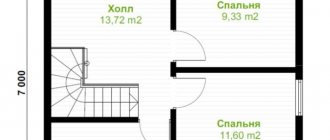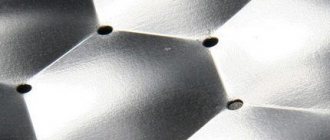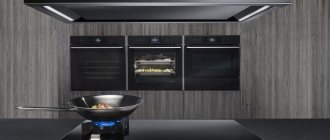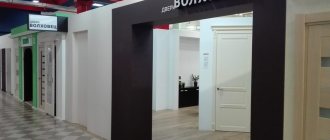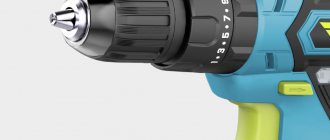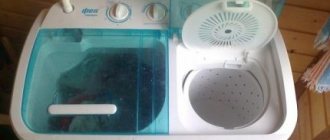15 Jul 2021
6388
What types of air conditioners are there? What is the difference between a split system and a monoblock? We analyze the types of air conditioners for apartments, their main functions, and calculate the power depending on the square footage. Pros and cons of the inverter.
- Air cooling and heating
- Remember about dry air
- We calculate the area of the room and power
- Choosing the type of air conditioner for the apartment
- Which energy efficiency class to choose
- Inverter or conventional air conditioner
- Comparison by noise level
- What are the operating modes of air conditioners?
- Additional functions in Haier air conditioners
- Installation feature
Air conditioning in the interior
Key parameters when choosing an air conditioner are power, energy consumption, engine type and health care functions. The inverter is quieter and consumes less energy. Additional functions that may be useful are room heating at sub-zero temperatures, an anti-allergen filter, self-cleaning and air humidification, and a UV lamp that removes viruses, bacteria and mold.
According to the sanitary rules and regulations of the Russian Federation (SanPiN) and GOST 30494-2011, the optimal air temperature in residential premises in summer is 22-25 °C, in winter - 20-22 °C. The World Health Organization's recommendations are similar: adults should sleep at a temperature no higher than 24°C, and children, older people and people with chronic diseases should sleep at a temperature no higher than 22°C.
In summer, the air outside the window warms up to 35 °C (not only in the south of the country, but also in the Urals and Siberia). A fan will not provide a comfortable temperature; it only disperses hot air. It is also impossible to keep windows open in the summer due to city noise, dust and insects. Air conditioning for home is the best option.
Air cooling and heating
A modern air conditioner can
- Just cool the air.
- Cool the room in the summer and heat it in the off-season (when it is about 0 °C outside and the central heating has not yet been turned on).
- Heat the room in winter (at a temperature of -20 ° C and below).
Most modern air conditioners are compressor type. They consist of similar elements: compressor, condenser, evaporator. They work on the principle of a refrigerator. The refrigerant (freon) takes heat from the hot air in the room and removes it through a heat exchanger to the street.
Compression devices can work in the opposite direction, heating the air - the result is a refrigerator in reverse, or a heat pump. If you can choose an inexpensive air conditioner for heating in the off-season, for full operation at -20 ° C it must have a winter set: frost protection and drainage heating.
What devices are suitable for heating in winter?
Haier Tundra DC AS07TT4HRA - heating at temperatures down to -15 °C. Haier Elegant HP −20C AS25NHPHRA - heating at temperatures down to -20 °C. Haier Flexis Super Match AS25S2SF1FA-W - heating at temperatures down to -20 °C.
Useful tips
When choosing a split system, you should not be guided only by the big name of the manufacturer. Firstly, all companies have unsuccessful models, and secondly, the market is replete with fakes from Southeast Asian countries that do not meet the parameters of the original. If in doubt, you should ask the seller to show the certificate of conformity. Usually there are no problems with this, but if there are any difficulties, it is better to contact another store.
It is not recommended to choose a device more powerful than the size of the room requires. Many users mistakenly believe that in this way they gain a certain margin of safety. In fact, no acquisitions will be possible - energy consumption, wear and tear of components and parts, and other expenses will be the same. Simply, the air conditioner will work in limited mode.
Purchasing a split system is a responsible task, since the parameters and capabilities of the kit will provide the microclimate in the room for many years. It is important to choose a device whose parameters are optimally suited for existing operating conditions. In addition, you should pay attention to additional features and functions. The durability and performance of the system will be ensured by timely care and maintenance. It is recommended that this work be carried out by invited technicians from specialized organizations.
Remember about dry air
If we turn again to SanPiN, the permissible (that is, comfortable) air humidity in the room is 40–60%. For comparison, 60–90% is the humidity in the jungle or a garden greenhouse, 20–30% is in the desert or in an apartment with central heating in winter.
When cooling, the air conditioner dries the air
This follows from the operating principle of compressor equipment. Condensation appears on the heat exchanger - moisture “pumped out” from the air, which is removed through the tube to the outside.
In cooling mode, the air conditioner can reduce the humidity level to 15-30% in 1-3 hours of operation, but these are extreme situations that are only possible with frequent or constant use of the device. In these cases, it is recommended to use a humidifier or take a device with a humidification function (functions are discussed below).
If you use the device moderately, alternating cooling with ventilation of the room, additional humidification is not required. For regions with air humidity above normal (like the Krasnodar Territory - up to 75%), air conditioning is even desirable.
When heated, air humidity remains almost unchanged
The heat exchanger remains warm, so condensation does not form in large volumes and does not dry out the air. Additional moisturizing is not required.
SELECTION OF SPLIT SYSTEMS
Most of the internal blocks have a dull office look, which does not fit with the ideas about the aesthetics of the home. Only a few manufacturers pay serious attention to the appearance of air conditioners. Among the successful design developments, we note several series of Artcool (LG). Thus, the Artcool Slim line is distinguished by an elegant, 177 mm thick body with a dark glass finish and LED backlighting. Artcool Gallery air conditioners have a square rather than rectangular body with a thickness of only 129 mm. You can insert a photograph or reproduction of a painting into the front frame. The devices of the newest Artcool Stilist series have a milky-white square body with an inscribed circle, decorated with dynamic lighting. LEDs allow you to simulate sunset, dawn and other dynamic lighting scenarios.
Timberk split systems: Laguna Nero series, completely varnished black body (a); Corona Lite series with Moon Light display (6)
To make the air conditioner last a long time
Before using the product, remove air and moisture from the refrigerant pipes and heat exchanger of the indoor unit. For this purpose, a special device is used - a vacuum pump.
The thing is that oil circulates in the hydraulic circuit of the air conditioner along with the refrigerant, with the help of which the moving parts of the compressor are lubricated. It is very hygroscopic, that is, it strongly absorbs moisture, upon contact with which it oxidizes, which leads to increased wear on the compressor and its rapid failure. However, unqualified installers usually do not pay enough attention to this procedure and do not remove air from the air conditioner, or most often they do not have a vacuum pump at hand. Please note that putting into operation a device that has not been properly prepared is unacceptable. While evacuation of the route is the key to durability and preservation of the air conditioner’s performance.
A little about refrigerant
The refrigerant in household split systems is located in the outdoor unit at the time of installation; most often it is charged taking into account the length of the route of 5 m. That is, if the length of the communications exceeds 5 m, for the correct operation of the air conditioner it is necessary to refill the refrigerant.
Over time, it may partially evaporate from the device during operation, then it has to be added. You can top up refrigerants R22 and R410A (but not more than 30% leakage, since the latter includes two components with approximately the same degree of volatility). It is not recommended to add R407C refrigerant to the system: it consists of three components with different volatility, so it must be completely replaced.
Inverter air conditioner ArtCool Stylist (LG) is one of the most interesting in terms of design
How to choose a split system for your home, 1.0 out of 5 based on 1 rating
We calculate the area of the room and power
The temperature in the apartment depends on the area, reflectivity and heat capacity of the materials, which, when heating themselves, heat the air in the house.
The relationship between the area of the room and the power of the air conditioner is direct - the larger the area, the more energy needs to be spent to cool the room. The number of people and heat from other household appliances also affect the power and help you choose the appropriate option.
Power formula: W = W1 + W2 + W3, where
- W1 - heat from the surfaces of the room (can be calculated as the product of the area by the height and by the coefficient q; for a room into which little light enters, it is equal to 30 W/m³, for a room with average illumination - 35 W/m³, for a brightly lit room - 40 W/m³).
- W2 - heat of people (for an adult at rest - 0.1 kW, for a person in motion - 0.13 kW, during physical activity - 0.2 kW).
- W3 - heat from electrical appliances (0.2 kW for TV, 0.3 kW for PC or laptop).
Example of calculating W for a room of 15 m² with a ceiling height of 2.5 m, a window on the sunny side, 2 computers and 2 residents: W = (15 × 2.5 × 35) / 1000 + 0.2 + 0.6 = 1, 31 + 0.8 = 2.11 kW. For the air conditioner, a power range from -5 to 15% is also indicated, which corresponds to different types of load. In our example the range is from 2 to 2.4 kW
Examples of air conditioners for a room up to 20 m²
Haier Tundra ON/OFF HSU-07HTT03/R2 - corrosion protection, fast cooling, night mode. Haier Pearl ON-OFF HSU-07HPL03/R3 - antibacterial filter, timer. Haier Lightera DC AS09NS5ERA-W - air ionization, UV lamp, super quiet.
The formula is suitable for rooms up to 70 m². For larger areas (offices, shops, industrial areas), other parameters need to be taken into account: materials of walls, floors and partitions, industrial equipment, and so on. The Haier website has a questionnaire that will help you choose a device without complex calculations.
Several rooms - several air conditioners
If you need to set up air conditioning in several rooms or throughout the apartment, you will have to install several devices or a branched system with one external unit and several internal ones. The main disadvantages when installing a multi-split system:
- installation work throughout the house (preferably at the stage of rough renovation);
- high cost of materials (blocks according to the number of rooms and copper pipes that need to be pulled from the outdoor unit to the far ends of the house);
- increased requirements for the reliability of the external unit.
Selection algorithm
It is better to select the room air cooling/heating unit in this order:
- We determine one or several rooms where it is planned to reduce the temperature in the summer - bedroom, living room, children's room.
- We find out the exact dimensions of the room and calculate the required cooling performance of the unit. We finally decide where to install the unit.
- We go to the online store, study the technology of our power segment, select the type of air conditioner that will fit perfectly into the interior.
- We compare the functions of the model we like with our needs. For example, a bedroom or children's room needs low-noise equipment.
- We calculate the budget for the event using the formula total cost = price of the household appliance + additional materials + installation. If the figure exceeds the planned costs, we narrow down the functions, choose a unit of a different type, or look for a cheaper option.
Note. Installation costs vary depending on the type of chiller. Example: to install and connect split system units, you will need copper pipes with insulation, an electrical cable, plus a master with a set of tools who will not work for free. You can start the mobile unit yourself.
Let's move on to calculating the cooling/heating power of an air conditioner, then we will conduct an introductory review of the models and present a rating of manufacturers.
Choosing the type of air conditioner for the apartment
The range is wide: from portable mini-devices to cassette and floor-ceiling systems with a power of 17 kW. The latter are relevant for large offices, shops, shopping centers and industrial premises.
A good option for an apartment is a wall-mounted split system, monoblock, mobile air conditioner
- , a mobile air conditioner
is similar to an electric heater. Does not provide for fastening (stands on the floor), removes warm air through the window (the kit includes plugs for the window opening with a hole for the tube). This is a seasonal solution - for the winter it is removed and the room is insulated. Cons: unregulated high noise level, manual removal of condensate from the pan, the need to remove warm air through a window (or a hole in the wall). - The wall-mounted split system
consists of two blocks: internal (mounted on the wall) and external (on the facade of the building). The combination is winning: the noisy part of the device (compressor-condenser) is moved outside, which makes the inside quieter. Due to the location of the condenser heat exchanger outside, heat is removed better than in mobile systems and monoblocks, and increases the service life of the air conditioner. - The monoblock
is mounted on the wall and consists of one block (which actually combines two blocks: compressor-condenser and induction). The air intake goes through tubes, which are also built into the wall and discharged outside. This air conditioner is noisier than a split system, but is usually cheaper, easier to install and does not spoil the appearance of the building. - Cassette, duct, column and floor-ceiling split systems. Let's combine them into one group as solutions for rooms larger than 100 m². You can view them in a separate catalogue.
Recommendations for the best installation locations in the home
It is better to install low-power air conditioners in living rooms. The bedroom has priority in this regard. If it is not possible to install a split system in the aisle, place it on the wall where the head of the bed is located (rather than opposite the bed). The flow of cold air is dispersed throughout the room, but its movement is felt stronger directly opposite the block. If a stream of cooled air is directed at a person, it can lead to a cold.
It is not advisable to install split systems in corridors, since this option will not allow achieving the desired temperature in the rooms.
Which energy efficiency class to choose
Power consumption and cooling and heating power are different parameters. For example, a Haier Leader DC split system cools 2.05 kW while consuming 0.64 kW. The ratio between the two values (3.2) is its energy efficiency. For household systems it is usually in the range from 2.5 to 4 - the higher, the more economical the equipment and the higher its rating and the less you pay for electricity.
There are 7 energy efficiency classes for air conditioners, according to the first letters of the Latin alphabet - A, B, C, D, E, F, G, they are defined by “European Union Regulation 2017/1369”. Energy efficiency for cooling (Energy Efficiency Ratio) and heating (Coefficient of Performance) are taken into account separately. EER and COP are specified in the specification as a fraction (Haier Leader DC has high heating and cooling efficiency - A/A).
Energy efficiency labeling for air conditioners
| A | B | C | D | E | F | G |
| EER | >3,2 | 3,0–3,2 | 2,8–3,0 | 2,6–2,8 | 2,4–2,6 | 2,2–2,4 |
| COP | >3,6 | 3,4–3,6 | 3,2–3,4 | 2,8–3,2 | 2,6–2,8 | 2,4–2,6 |
Manufacturers rating
On the one hand, the homeowner wants to purchase a high-quality household appliance, on the other hand, he wants to understand how much a good air conditioner costs. All products are conventionally divided into 3 price categories – low, medium and high. We recommend purchasing units from the last two groups; buying a cheap cooler is always a lottery.
The following brands belong to the highest category:
- Mitsubishi Electric;
- Mitsubishi Heavy Industries;
- York;
- Daikin;
- Fujitsu General.
Having paid considerable money for air conditioners from the listed companies, you will be confident in the durability, efficiency and reliability of the purchased device. The plastic case will not turn yellow, the compressor will not rattle in the middle of the night, and the performance will be sufficient in any heat.
Heavy Industries and Electric are 2 separate divisions of Mitsubishi, producing equally high-quality climate control equipment
Manufacturers of a lower class (middle category) are not much inferior to the “grands” in quality, but split systems are significantly cheaper:
- Toshiba;
- Samsung;
- Midea;
- Haier;
- Electrolux;
- Ballu;
- General Climate;
- LG.
Please note that this list also includes Chinese companies among South Korean brands. Indeed, the Haier and Midea brands have shown themselves to be confident “average” brands that are trustworthy.
It is unrealistic and pointless to list companies of the lowest category. In China, there are factories that start working “seasonally” and produce a lot of coolers from cheap components with unknown names. Therefore, you should not save much on an air conditioner; the minimum price threshold is $300.
Inverter or conventional air conditioner
Inverter air conditioners first “rectify” alternating current from the outlet, then invert it—converting it back into alternating current by changing its frequency. Due to this, the compressor can regulate engine speed - when the temperature is reached, it will slow down and reduce energy consumption by 40-50%. Inverters have lower noise levels and a wide temperature range.
Pros and cons of an inverter
- More expensive than conventional air conditioners by 10 thousand or more rubles. Repairs are also more expensive (the price of an inverter is about a third of the price of new equipment).
- Less electricity consumption (savings declared by manufacturers are 40–50%). Relevant in regions where it is hot in summer and the room needs to be heated in winter.
- The noise is on average 5–10 dB(A) lower compared to conventional air conditioners, but the opposite can happen - it depends on the power and characteristics of a particular model.
- The inverter maintains the temperature more accurately, prevents spikes and cools and heats the room 30% faster.
- By adjusting the rotation speed, the engine can last much longer.
- There is less risk of damage to electrical wiring due to high compressor start-up currents.
Examples of inverter devices for an apartment
Haier Leader DC AS07TL5HRA - heating at -15 °C, self-cleaning units. Haier Tundra DC AS09TT4HRA - energy efficient freon, timer, night mode. Haier Flexis Super Match AS25S2SF1FA-W - heating at -20 °C, carbon and antibacterial filter.
Comparison by noise level
The noise level (sound pressure) is individual, and all people perceive it differently. In the specifications, it is indicated in noise units taking into account human perception of sound dB(A) - acoustic decibels. The parameter is indicated for several types of load (modes): high, medium, low and ultra-low.
For an inexpensive inverter air conditioner Haier Tundra DC, the noise level is 36/34/30/24 dB(A). At maximum load, its volume will be like a muffled conversation between people; at minimum, it will be like a whisper. The more expensive Haier Flexis Super Match model has even lower performance - 38/32/25/16 dB(A).
Table of correspondence to familiar sounds
| dB(A) | Characteristic | What sound does it remind you of? |
| 0 | Can not hear anything | Silence |
| 20 | Barely audible | Whisper of a person at a distance of 1 m |
| 30 | Quiet | The ticking of a wall clock (permissible maximum noise at night according to SNiP 23-03-2003 “Noise Protection”) |
| 35 | Quite audible | Muffled conversation |
| 40 | Can be heard well | Normal speech of people (the norm for residential premises during the day) |
| 75 | Noisy | Screaming, laughing at a distance of 1 m |
| 95 | Very noisy | The noise of a moving subway car 7 m away |
What are the operating modes of air conditioners?
Most air conditioners are manufactured abroad, so the mode designations on the remote control are often in English. One of the exceptions is Haier devices: their menus are Russified (full catalog here). You can find the following designations:
- Cold (cooling, snowflake symbol) - starts the compressor, which cools the air. Once the temperature reaches the specified value, the fan will slow down and operate at lower speeds.
- Heat (heating, symbol of the sun) - the evaporator and condenser change roles and begin to heat the air in the room.
- Dry (drying, drop symbol) - in this mode, the temperature on the surface of the evaporator is reduced as much as possible, the fan starts working at low speeds and blows on the evaporator. This leads to condensation of moisture, which is discharged outside. A good solution for regions with high humidity.
- Fan Speed (fan symbol) - adjusts the rotation speed of the indoor unit fan.
- Sleep (night mode, symbol of the month) - noise reduction to 18–19 dB(A) at night.
- Timer (timer, dial symbol) - the ability to set automatic on and off (including interval) and mode changes.
- Swing (air dispersion) - changes the position of the air conditioner curtains, allows you to direct the flow in any direction or enable fan distribution.
- Lock (lock, lock symbol) - locks the remote control from children or accidental pressing.
Additional functions in Haier air conditioners
- I-Feel - temperature measurement using a sensor in the control panel. Data is transmitted every 3 minutes. If there is no signal for 7 minutes (the batteries in the remote control are dead), the data will be read from the sensor in the wall unit.
- Turbo mode - work at 120% of the nominal performance for a short period (up to 30 minutes). Allows you to quickly cool the air in the room.
- 3 in 1 filter (anti-allergenic, anti-viral, anti-fungal) - the membrane retains particles of large and medium fractions, including pollen, odors, impurities in the air, and keeps the air clean and healthy.
- Ecopilot (motion sensor) is a way to reduce electricity consumption by up to 36%. The device turns on if there is a person in the room. The function also allows you to select the flow mode: Follow and Avoid. In the first case, the air flow follows the person, in the second, it goes around him.
- Intelligent Air - when cooling, the air flow moves horizontally (along the ceiling) so as not to overcool people in the room; when heating, on the contrary, vertically (along the wall).
- UV lamp - generates ultraviolet radiation with a wavelength of 254 nm. This is enough to destroy bacterial DNA and inactivate the SARS-CoV-2 virus (99.998% efficiency according to Texcell SA).
- SelfClean - self-cleaning of blocks from dirt and dust. Starts a cycle of freezing followed by thawing.
- Steri Clean 56°C - heats the evaporator to 56°C for 30 minutes to sterilize.
- Nano-Aqua - ionization and air humidification. Creates negatively charged water microradicals and destroys bacteria with an efficiency of 96.7% in 2 hours. Has a beneficial effect on the condition of human skin.
- O2-Fresh (optional) - fresh air supply from the street with a volume of 30 m³/hour (purchase and installation of a fresh air supply unit is required).
- Emergency heating - maintaining the temperature at 10°C. Relevant for suburban housing and premises where people are not constantly present.
- Wi-Fi - control via smartphone and SMARTAIR2 or hOn mobile application (for Haier devices).
Installation feature
The final recommendation when purchasing is to involve installers from the store or organization where you order the equipment. This will help avoid problems in warranty cases.
The installation team that installs the air conditioner must put a stamp on the warranty card. Private craftsmen (according to advertisements) do not always have such a seal - they can work without individual entrepreneurs and certification. In this case, the service center, even if the breakdown occurred due to a defect, may refuse free repairs.
Assembly, materials
Based on the quality of assembly and plastic, if the user chooses a product via the Internet, then he should read user reviews.
If the split is selected directly in the store, then it becomes possible to inspect:
- ask the seller to open the lid - it should not be noticeably thin or flimsy;
- high-quality plastic with thick walls, bright white, without yellowness;
- ask to remove the mesh filter and inspect the heat exchanger - the petals should be free of jams and not too thin. Low-quality models have plates so thin that they crumple at the slightest touch.


